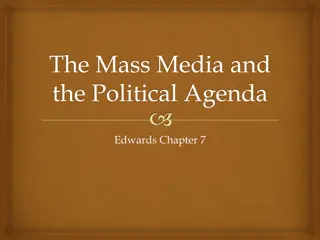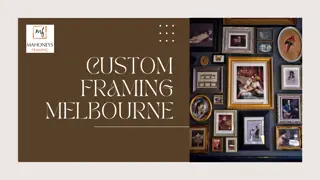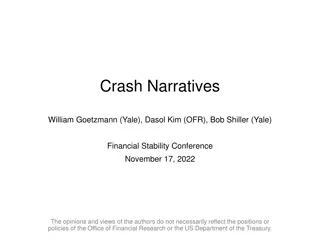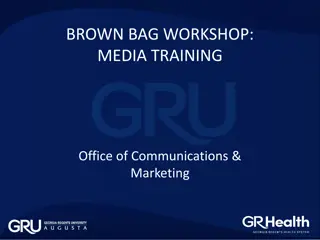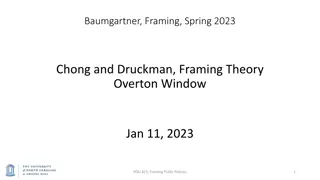Understanding Media Influence: Lesson on Agenda Setting and Framing Principles
Delve into the power of media in shaping perceptions and agendas with this insightful lesson. Explore the concepts of media agenda setting, framing principles, and the impact of different news story framings. Reflect on how media influences what we think about rather than dictating what opinions to hold, and consider the implications for ethical and successful communication strategies.
Download Presentation

Please find below an Image/Link to download the presentation.
The content on the website is provided AS IS for your information and personal use only. It may not be sold, licensed, or shared on other websites without obtaining consent from the author. Download presentation by click this link. If you encounter any issues during the download, it is possible that the publisher has removed the file from their server.
E N D
Presentation Transcript
Media Framing Module Eleven | Lesson One
Lesson One | Introduction Lesson Overview 1. Understanding the power of media 2. Media s Agenda Setting Function 3. Media Framing Principles 4. Everyday media analysis looking at macro and micro levels
Lesson One | Introduction 1. Understanding the power of the media Individually: One of the most influential sources that helps shape what we know about the world around us. If we limit our news consumption to only a few (or even just one) news source, then what we know can also be very limited. From a public relations perspective: Media are key intermediaries in conveying our news to our key publics. What they convey and how they convey it become crucial to managing key relationships
Lesson One | Introduction 2. Media s agenda-setting function Media don t tell us what to think. They tell us what to think about. Roots in political coverage The topics covered by media influence what the public considers to be important; Media shape the public agenda. For example, media coverage might indicate if we should think about the topics of the economy and human rights more than the topic of healthcare. 2nd-level agenda setting tells us which attributes of an issue or topic are important to think about. (Not just the economy, for example, but the deficit.)
Lesson One | Introduction 3. Media Framing Principles Irving Goffman: Frames help us construct experience our reality Media use frames to imply what matters, and how we should understand / interpret important topics Two models: Entman Media frames suggest the problem, solution, responsible party and moral judgment Iyengar News can be conveyed as an episodic event (standalone, one time), or thematic event (part of a longer / broader trend)
Lesson One | Introduction 3. Media Framing Principles Parable of the blind men and the elephant takes many perspectives to see the whole.
Lesson One | Introduction Discussion Questions What do we mean when we say, Media don t necessarily tell us what to think; they tell us what to think about? Can you think of an example where you might have observed this idea at play? You work for a cruise ship company and have just heard that one of your ships has broken down off the coast of Alaska. Imagine it s the first break down for this company. What type of news story would reflect episodic framing? What type of news story would reflect thematic framing? In your opinion is one version more successful more ethical than the other? What are the ethical merits of each approach?
Lesson One | Introduction 4. Everyday Media Analysis 4.a Macro-level media framing analysis Analyze headlines: indicates what the publication sees as the major takeaway Analyze images used: indicates who the publication sees as the major players Analyze article placement: indicates how important the publication places on the news itself Analyze links and context: indicates what the publication sees as relevant content / context
Lesson One | Introduction 4. Everyday Media Analysis 4.b Micro-level media framing analysis Analyze terms used: are there values-laden terms that suggest a specific stance? (e.g. illegal alien vs. undocumented worker) Analyze types of content used: Stats? Quotes? Analyze spokespersons used: Are there false equivalents? Is your organization s spokesperson use? Analyze overall tone: positive, negative, or neutral? Analyze the implicit takeaway message: If this was the only article someone read about the topic, what would they know? And what remains unanswered?
Lesson One | Introduction Discussion Questions What is meant by a values-laden term? Can you provide an example (other than the example already provided)? How does the use of specific words and phrases shape the way a news article is conveyed? What is the parable of the blind men and the elephant? How does this apply to media framing?









